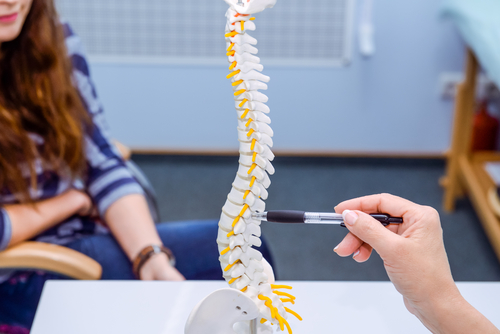Growth-friendly Spinal Implants May Help SMA Children Before Fusion Surgery

Spinal fusion surgery — a procedure to fuse two or more spine vertebrae — is more successful at reducing spine curvature in children with spinal muscular atrophy (SMA) type 1 and 2 if they have previously been given growth-friendly spinal implants, a study reports.
But the risk of complications in any surgery with this patient group needs to be considered, the researchers noted.
Their study, “Children With Spinal Muscular Atrophy With Prior Growth-Friendly Spinal Implants Have Better Results After Definite Spinal Fusion in Comparison to Untreated Patients,” was published in the journal Neurosurgery.
SMA is characterized by the gradual loss of motor neurons — the nerve cells responsible for controlling voluntary muscles — in the spinal cord, leading to muscle weakness and wasting.
It is divided into subtypes (ranging from type 0 to type 4), depending on the age of disease onset and symptom severity. Children with SMA type 1 and 2 — two of the most severe subtypes — usually develop spine deformities in their first year of life.
The use of growth-friendly spinal implants as a temporary solution until definitive spinal fusion surgery can be performed to correct spine deformities in these children has been gaining increasing interest.
However, “most of these pediatric implants require repeated surgical procedures to allow growth of the spine and the thorax with published risks of implant infection or colonization, ossifications, and anesthetic problems especially in SMA children,” the researchers wrote.
More recently, a surgical procedure combining growth-friendly implants with magnetically controlled devices has started being used in children with SMA, in an attempt to lessen the need for repeated surgeries. However, the effect of these spinal implants on the clinical outcomes of corrective spinal fusion surgery remains unknown.
A team of German researchers assessed and compared spinal fusion surgery out in 14 SMA type 1 or 2 children previously given growth-friendly spinal implants (before age 10) to 14 similar children who had not. All were nonambulatory, and children in the first group were an average age of 13.8 at fusion surgery, while those in the second were an average of 13.7 years old.
Spine length, angle of curvature, pelvic obliquity (degree of pelvic tilting), and type of spine deformity (kyphosis and lordosis), were evaluated in all children before and after spinal fusion surgery (spondylodesis).
On average, 4.9 years passed since children received their growth-friendly spinal implants until they had them removed to undergo a corrective spinal fusion surgery.
Children with the growth-friendly spinal implants had a spine curvature angle of 71 degrees, which was reduced to 33 degrees following surgery, reflecting a correction of 54%.
In contrast, children who had not previously received growth-friendly spinal implants had a spine curvature angle of 104 degrees, which was reduced to 50 degrees following the fusion procedure, corresponding to a correction of 52%.
Researchers also found that pelvic obliquity improved in all children, although those who had the spinal implants achieved the best results.
“[C]hildren without prior treatment had more severe curves, less correction, and more severe pelvic obliquity at final results,” the researchers wrote.
No significant differences were found in spine length between the two groups of children. Likewise, “kyphosis and lordosis were not significantly influenced by both surgical treatment methods.”
“These data show the positive effect of prior growth-friendly surgical treatment on radiographic results of spinal fusion in children with SMA,” the researchers wrote.
However, “it is still controversial whether early surgical treatment outweighs possible complications,” they noted, and “an intentional delay of growth-friendly surgery may be beneficial for selected SMA patients.”
They also recommended “further studies analyzing the influence of poor bone quality on the corrective results of definite spinal fusion” to “help to predict surgical outcome” in SMA type 1 and 2 children.







